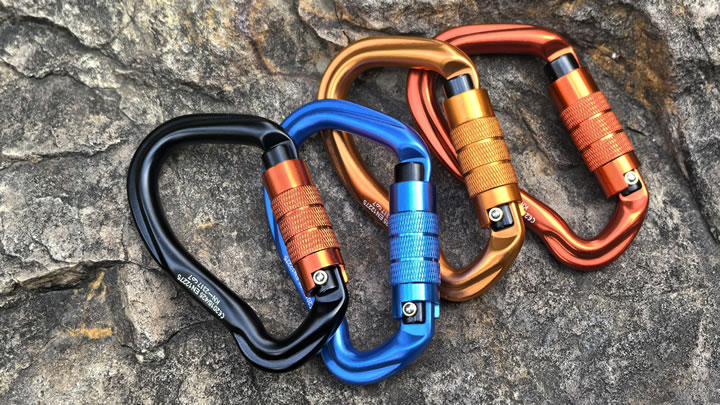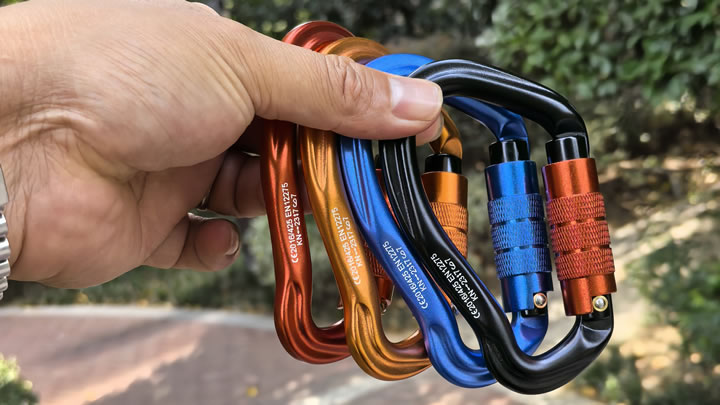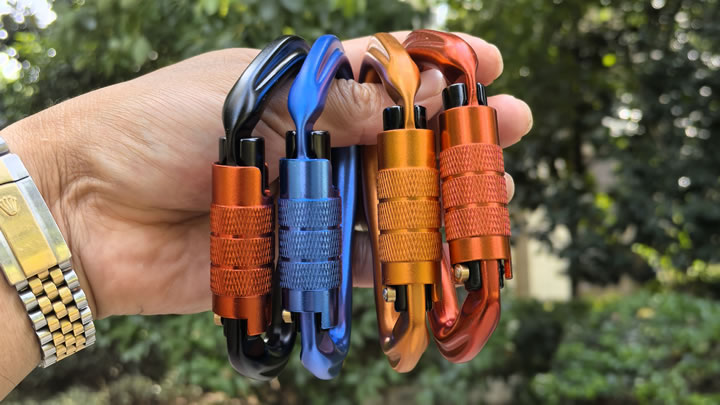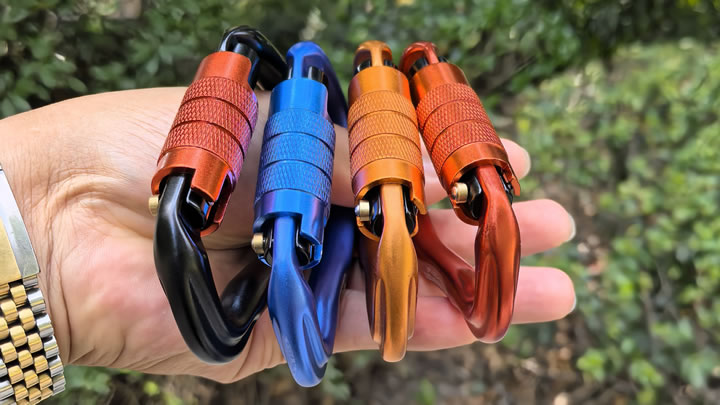How to attach a climbing swivel ring to a harness?
Attaching a climbing swivel ring to a harness is a fundamental skill for climbers, arborists, and rescue professionals. Done correctly, it ensures smooth rotation, reduces gear stress, and maintains safety during dynamic loads. However, improper setup can lead to cross-loading, gear failure, or accidents. This guide breaks down the process step-by-step, highlights common mistakes, and offers pro tips for seamless integration into your vertical systems.

Tools You’ll Need
- Climbing harness with a certified belay loop.
- Locking carabiner (screwgate or auto-locking).
- UIAA/CE-certified climbing swivel ring.
- Optional: Rope, pulley, or rigging plate for complex systems.
Step-by-Step Attachment Guide
- Inspect Your GearCheck the swivel ring for cracks, corrosion, or stiffness in rotation.Ensure the harness belay loop shows no signs of wear or fraying.Verify the locking carabiner’s gate functions smoothly and fully locks.
- Connect the Swivel RingClip the locking carabiner through the swivel ring’s eyelet.Attach the carabiner to the harness’s central load-bearing point—typically the belay loop (never the gear loops or waistband).Tighten the carabiner’s locking mechanism completely.
- Check AlignmentEnsure the swivel ring hangs freely without touching other gear (e.g., rope bags, ascenders).Confirm the carabiner is loaded along its major axis (longest side) to avoid cross-loading.
- Test the SetupApply light tension to the swivel ring (e.g., by pulling a rope) to confirm smooth rotation.Simulate directional changes to ensure no binding occurs.
Common Mistakes to Avoid
- Using Non-Locking Carabiners: A standard snap gate can accidentally open under rotation.
- Incorrect Attachment Point: Gear loops or haul straps aren’t designed for dynamic loads.
- Ignoring Cross-Loading: Sideways pressure on the carabiner reduces its strength by 50-70%.
- Overloading the System: Exceeding the swivel ring’s rated capacity (e.g., 25 kN+) risks failure.
When to Add a Swivel Ring
- Multi-Pitch Climbs: Reduces rope drag when redirecting anchors.
- Hauling Systems: Prevents twists when lifting heavy loads.
- Rescue Scenarios: Ensures smooth patient lifts without entanglement.
- Arborist Rigging: Allows chainsaws or logs to pivot safely during lowering.
Pro Tips for Optimal Performance
- Pair with a Rigging Plate: Distribute load evenly in multi-anchor setups.
- Lubricate Sparingly: Use dry lubricant on swivel bearings if rotation stiffens (avoid oil, which attracts dirt).
- Shorten the System: Keep the swivel close to the harness to minimize leverage forces.
- Backup Critical Loads: For rescue or heavy hauling, add a redundant carabiner or swivel.
Maintenance and Safety Checks
- Post-Use Inspection: Clean dirt/debris from the swivel’s bearings.
- Monthly Deep Clean: Soak in mild soapy water, rinse, and air-dry.
- Retire Gear Promptly: Replace the swivel ring if rotation becomes gritty or metal shows cracks.
Why This Matters
A properly attached swivel ring transforms your harness into a versatile pivot point, enhancing safety and efficiency. By neutralizing rope twists, reducing wear on gear, and enabling fluid movement, it empowers you to tackle complex vertical challenges with confidence. Whether you’re scaling a big wall or rigging a technical rescue, mastering this setup ensures your system performs as engineered—when it matters most.
Final Note: Always prioritize certified gear and practice setups in controlled environments before relying on them in the field. Safety isn’t just about gear—it’s about knowledge and precision.






